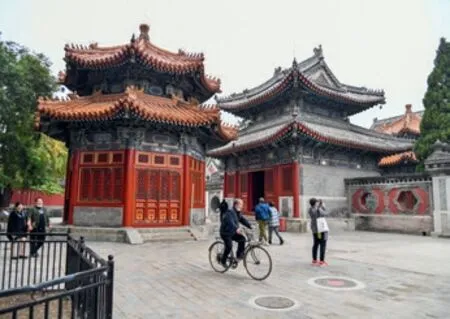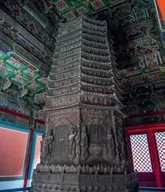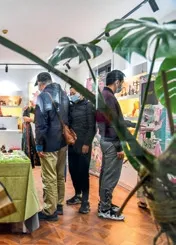Total Temple Makeover
Beijing Art Museum, housed inside the Wanshou Temple, a Buddhist temple built and expanded during the Ming and Qing dynasties (1368-1911)in western Beijing, reopened its doors to the public on September 16, following a five-year renovation.
The wordliterally translates to “10,000 longevities,” and is often used to wish seniors good health.
The museum closed in 2017 to make way for the renovation project that started in 2018.
Inside the temple, an area of more than 10,000 square meters has been revamped, with murals and Buddha statues restored to their old colorful splendor and exhibition rooms twinkling afresh.
In celebration of its complete overhaul, the museum unveiled five new basic exhibitions, with illustrated photos themed on the history of the Wanshou Temple, the legacies of its Buddhist statues, antiques, traditional furniture,calligraphy, and paintings of the Qing Dynasty’s imperial family.
The exhibits include more than 350 cultural relics and treasures, like jade,porcelain, gold, lacquer, wooden and ivory items. Nearly 70 percent of the relics are on display for the first time.
In addition to the restoration of its historic buildings and relics, the museum has added new facilities such as digital displays, a bookstore and a cultural and recreational space. BR
()
Copyedited by Elsbeth van Paridon
Comment to taozihui@cicgamericas.com

5. The Wanshou Temple reopens its doors to the public on September 16 after a five-year renovation

1. Visitors admire the Buddha Hall where 22 Buddha statues sit in their original state—though all reinforced, repaired and gilded

2. A bronze pagoda embedded with a gold cast from the Ming Dynasty (1368-1644)stands inside the Buddha Hall

3. At the exhibition on the history ofWanshou Temple, a visitor takes a closer look at the photo wall depicting the venue’s story throughout the years

4. Visitors pick up souvenirs at a store selling creative cultural knick-knacks inside the temple

